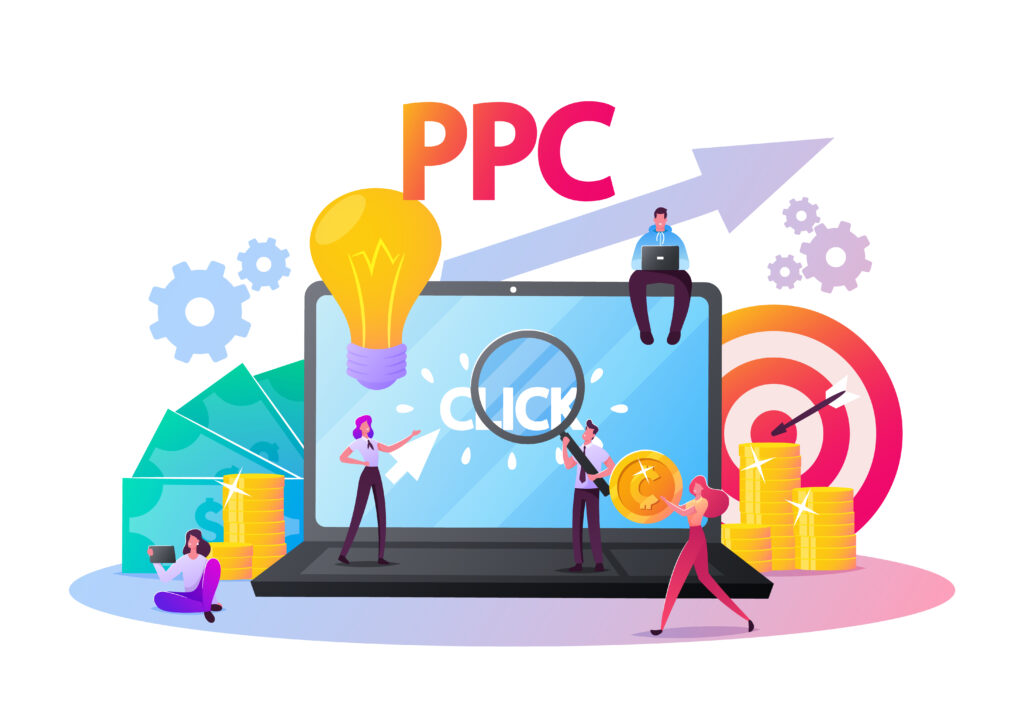
Pay-per-click (PPC) marketing is an advertising model where advertisers pay a fee each time a user clicks one of their ads. It is one of the most effective methods for B2B businesses to amplify their brand’s reach and drive lead generation. Platforms include, but are not limited to Google, Bing, Facebook, Instagram, Twitter and LinkedIn and can be served on desktop, tablet or mobile devices.
Whether you’re just getting started or already have fully developed B2B PPC campaigns in place, discover the secrets to maximizing your paid search campaigns with these best practices:
Strategizing and Building Your B2B PPC Campaigns
Defining your PPC goals and objectives at the initial stages of campaign planning is vital. Consider the following questions as you plan your B2B PPC campaigns:
- Are you aiming to boost brand visibility, increase website traffic or capture leads through your campaigns? Clearly outline the desired visitor actions to shape your campaign process.
- Where is your audience most active when researching your products/services? LinkedIn Ads is typically the best paid social media channel for B2B while many online marketers go to Google Ads for search engine marketing (SEM) campaigns.
- What is your monthly budget? And how much do you want to spend on each platform? It’s important to test platforms you believe your audience is on, but you also do not want to stretch your budget too thin by advertising on too many channels.
When planning your B2B PPC campaigns, don’t forget the importance of keyword research for your paid search campaigns on Google or Bing Ads. Building a strong list of relevant and focused keywords can be the game-changer that determines whether you get a great return on investment or end up spending loads of money on clicks that don’t matter. Google offers tools like their Keyword Planner where you can test your selected keywords and discover new ones that you may have missed.
Before you kick off your PPC campaign, it’s time to get conversion tracking up and running. This lets you track and analyze what happens when people interact with your ad – think downloads, key page visits and more. Each platform comes with its unique conversion tracking methods, but if you would like to consolidate your tracking efforts, consider leveraging Google Tag Manager to manage all of your conversion tracking actions in one system.
Build Optimized PPC Landing Pages
Once you’ve set your goals and laid the groundwork with your PPC keywords, it’s crucial to ensure a seamless user experience for those who click on your ads and land on your website. Here are valuable landing page tips to enhance your campaign’s effectiveness:
- Create dedicated landing pages for each PPC campaign (and each ad group for Google Ads) with simple-to-read, concise and action-driven copy. Make sure that each landing page includes one or more of the PPC keywords you are targeting and strategically place it in your landing page’s page title, H1 tag and body of the page.
- Keep the user experience consistent beginning with your ad copy, to the landing page copy to the content offering you include on your landing page. Landing page experience and relevancy are two of several key factors that impact how well your PPC ads perform in Google and Bing Ads so make sure your page maintains a consistent look and feel.
- Include trust signals such as customer logos and client testimonials in your landing page to establish authority and credibility for your audience.
The Power of Testing, Measuring and Optimizing
Once you’ve completed all of the above steps, it’s time to launch, test, measure and optimize your B2B PPC campaigns.
Before you launch your campaigns, make sure your settings are properly set up to address your geographic and demographic targeting, the days/times you want your ads to show and your budget. Each PPC platform has its capabilities and limitations in its audience targeting options.
When building your ad campaign content, you’ll want to produce different ad variations to A/B test specific elements. Experiment with calls to action, ad copy, headlines, colors and images. Only one element at a time to ensure accurate reporting and optimize your ads based on the testing performance. A/B testing should be an ongoing process as you continue to adjust your ads to see what is working and what is not.
Don’t forget to regularly assess how your campaigns are performing – weekly, monthly, quarterly and even yearly – and assess your ROI. Keep an eye on important metrics like CTR, CPC, conversions, conversion rate and cost per acquisition or cost per lead. These metrics guide your decision-making process based on data, the numbers don’t lie.
When it comes to developing B2B PPC campaigns, it may seem like a breeze, but without proper planning, research and setup, you could be setting yourself up for failure. Looking for expert advice on creating and executing successful campaigns or enhancing your B2B digital marketing efforts? Contact us today or request a free marketing consultation! We’ve helped hundreds of clients generate valuable leads with their PPC campaigns.
There are no comments